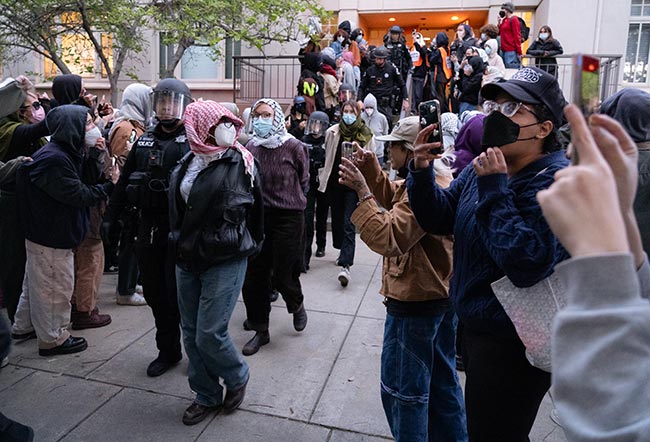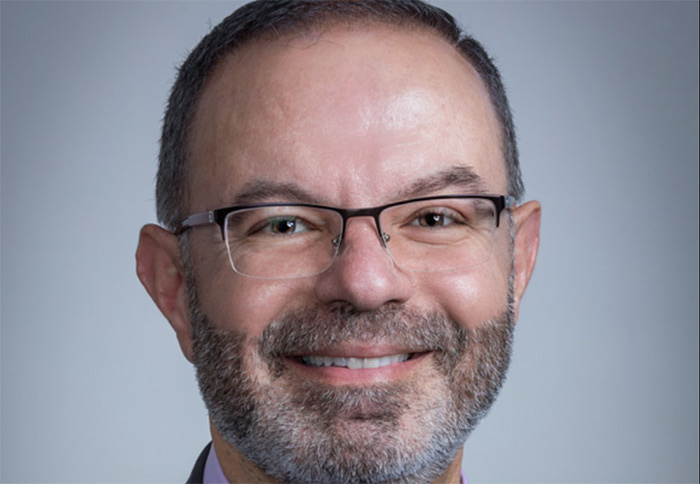Students learn the past for their future
Five Claremont High School students recently got a living lesson in history when they traveled to the Pilgrim Place senior community to interview veterans about their experiences.
The teens—hailing from Lisa King’s CAHSEE English class for students who have not yet passed the high school exit exam and may need extra support in writing—were paired up with members of the Peace Vigil Committee of Pilgrim Place.
These local peace activists have gathered on the corner of Indian Hill and Arrow each Friday for 12 years, signs in hand, calling for the end of US conflicts in Iraq and Afghanistan and advocating for non-violent resolution.
The youths arrived at Pilgrim Place at 11:30 a.m., where they met with World War II veterans Ben Bennedsen and Jim Lamb, Korean War veterans Rupert Nelson and Bob Smith and Vietnam veteran Dan Keenan.
The students, armed with a list of questions the class had brainstormed, then proceeded to learn about the veterans’ lives, with a focus on their time in the military. The students-turned-journalists also tried their hand at photography, snapping pictures of their interviewees.
Some of the students’ questions were pointed.
“How did you feel knowing you might have to kill someone?” Martin Clark asked Jim Lamb, who served in World War II for a year.
“After I was in the service, I realized I could not kill another person,” he said. “You’re asking a very big question. There are lots of men and women in mental hospitals right now because of having to answer that question by killing someone.”
For Christian Tanori, learning about Korean War veteran Bob Smith’s post-military life was as fascinating as his war memories. Mr. Smith shared that, along with 24 years teaching in the Congo, his travels have included 9 countries in Europe and 5 countries in Asia.
“Mine used to travel to tons of places. Oklahoma is the farthest I’ve gone,” Christian related during a lunch break in which the students joined a roomful of Pilgrims in the Abernathy dining room.
It’s said that everyone has a story, and the students’ visit provided them with the chance to hear some of the more interesting tales around. Mr. Bennedsen, who got “caught up in the draft” at age 19, talked about his time in World War II, serving in the 14th Armored Division in France. He noted that his division came to be nicknamed the Liberators. This is because, after landing in Marseille in southern France on October 29, 1944, they freed many prisoners of war on their march eastward toward Austria, including Mr. Bennedsen’s brother-in-law.
After warning the teens that he was hard of hearing, Rupert Nelson—a Mt. San Antonio Gardens resident—shared some history. His life story, Like the Rings of a Tree, is notably available as an eBook on Amazon.com.
Mr. Nelson started off as a Danish-speaking farm boy growing up in the Midwest. His father was a rural milk carrier and his mother was a seamstress.
“She had 5 children, so she was awfully busy. Don’t have 5 kids: it’s too many,” he laughed.
He began his education in a one-room schoolhouse and then went on to attend the University of Sioux Falls before being drafted in 1952 at age 21 to serve in the Korean War.
Later, he was a mechanic in a maintenance division. For this very skilled position, he was sent to an armored school in Detroit, then to the Chrysler Tank Arsenal where he helped assemble tanks and, finally, to General Motors to bone up on hydromatic transmissions.
While many soldiers were killed in the battalion they were following, there were no fatalities in his maintenance division. That good fortune did not stop Mr. Rupert from seeing firsthand the ravages of war.
“Wars are different,” he said. “Some just kind of get foisted on you. The worst thing is that it’s the civilians who get hurt the worst.
“This was certainly true in Korea,” he continued. “The winters are extremely cold and there were lots of refugees, lots of kids begging for food. Many, many children died.”
Later in the school year, the students will attend a ceremony in which they present a framed memento—each veteran’s story accompanied by a photograph—to each of their new friends.
Ms. King said that this kind of activity teaches a student much more than just another day in the classroom.
“I feel that it works on their active listening skills in general as well as in note-taking,” Ms. King said. “Lots of kids struggle not because of a lack of skills but because they don’t feel a connection between what’s happening in the classroom and the world outside of school. This is a reward for them, so they can see that writing can be a blessing and a gift.”
—Sarah Torribio
storribio@claremont-courier.com








0 Comments